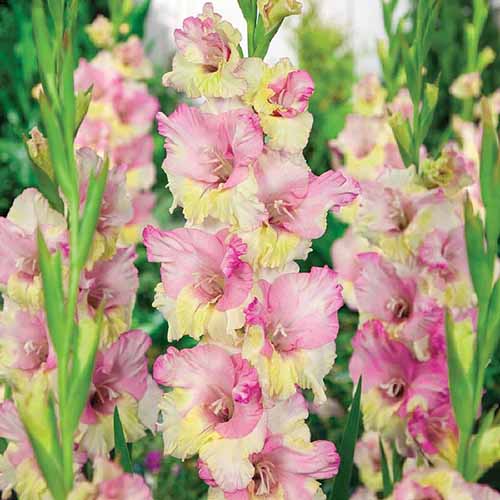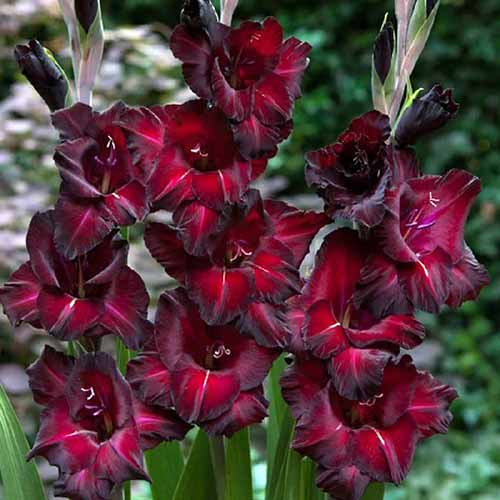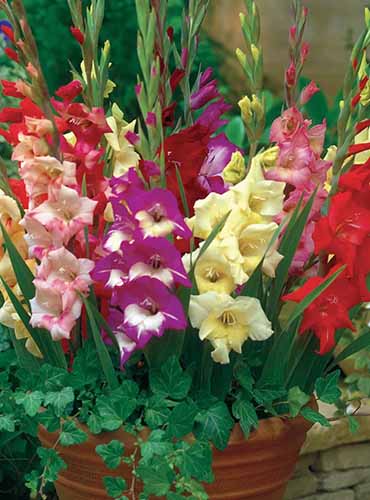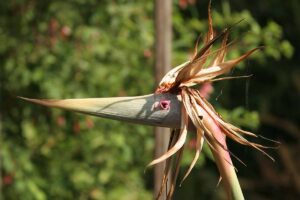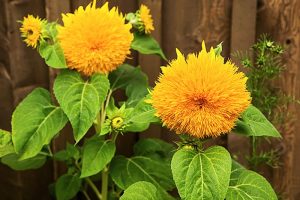If you’re anything like me, you spend at least a portion of the winter dreaming of the glory of the coming summer’s garden. I plan and plot, but most of the actual work won’t start until the spring.
But there are a few gardening tasks that I can begin during the winter months to get a jump on the growing season.
It gives me that gardening fix I crave, and it helps me to prepare my upcoming magical summer garden. Starting gladiolus corms early is one of those tasks that I look forward to.
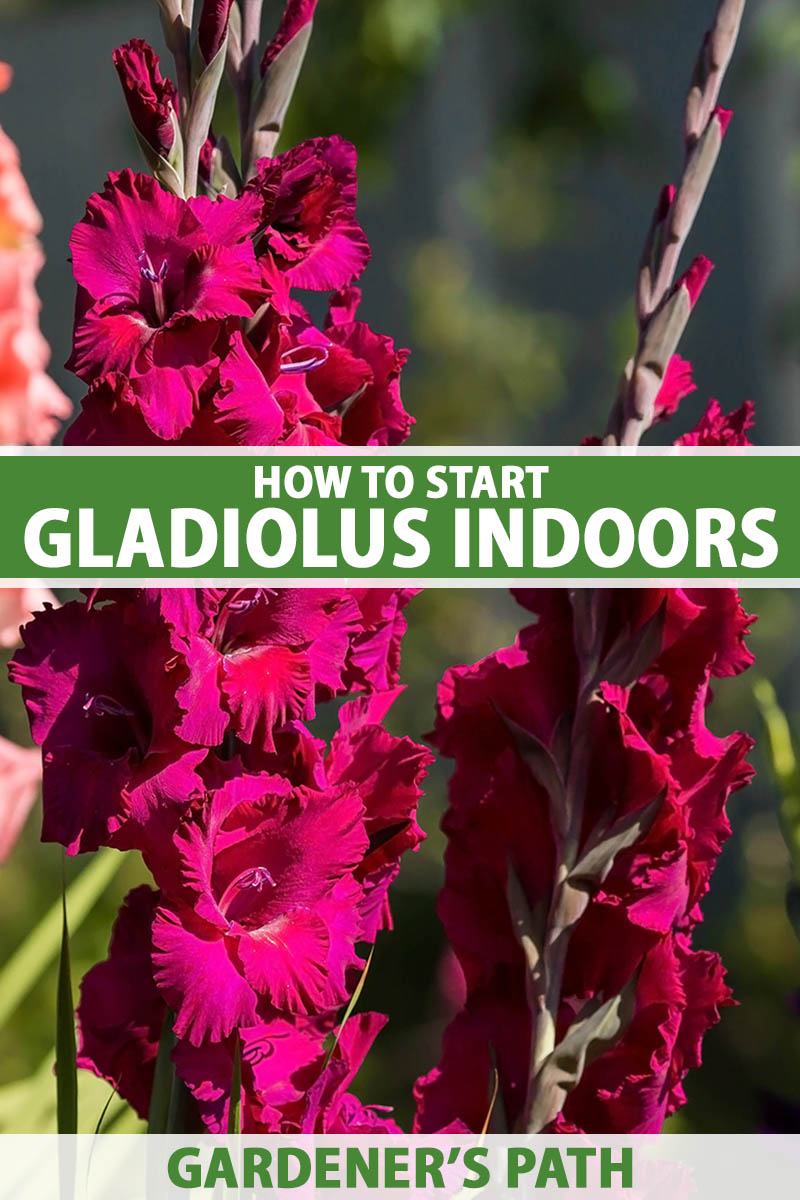
We link to vendors to help you find relevant products. If you buy from one of our links, we may earn a commission.
As late winter rolls around, I start planting so I can enjoy the colorful gladiolus flowers earlier than if I planted them directly outdoors.
This guide will give you the knowledge you need to start your corms and move them to the garden when the timing is right.
Here’s what we’ll go over with that goal in mind:
How to Start Gladiolus Indoors
To be clear, gladiolus have corms, not bulbs. But many gardeners refer to them as “bulbs,” so we’ll being using the terms interchangeably in this guide.
Spring can’t come early enough, as far as I’m concerned. So let’s not wait one minute more!
Prepare the Corms
Four to six weeks before the last predicted frost date in your area, prepare the corms.
Whether you purchase new bulbs to plant or you’re restarting some that you lifted in the fall and kept in storage, you need to prepare them for planting.
Some retailers won’t carry gladiolus during the off season but others have them in stock, so if you’re buying new, it pays to shop around.
Eden Brothers, for example, carries a fantastic range, from the tricolored pink, pale yellow, and creamy white ‘Mon Amour’ to the blood-red ‘Black Star.’
Or maybe you want a mixture of colors. If so, visit Burpee for a Glamini mix in yellow, red, purple, and white.
Brush off any dirt from the overwintered bulbs with a soft, dry brush. Divide up any large clumps. Purchased bulbs should be clean and already divided up for you.
You can optionally set the corms in water overnight to encourage them to open up and start growing.
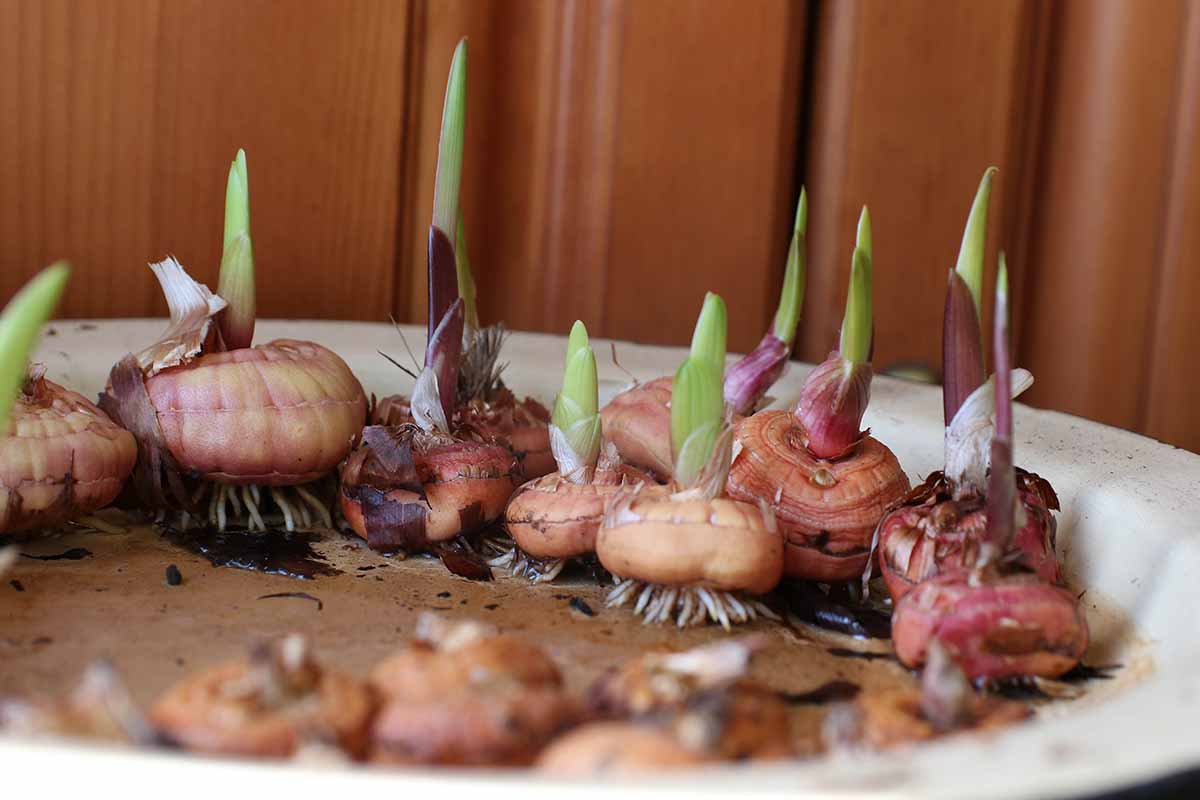
Either submerge them entirely or just set the base in the water. This just speeds up the sprouting process, but it’s not essential.
Planting
Fill a flat or a container that’s at least eight inches deep with fresh, water-retentive potting mix.
If you have lots of gladiolus corms, consider using a large storage bin – 18-gallon or larger. Just remember to put it in place before you start filling it up, because it’s going to be heavy to move.
You might even want to put the container on casters or in a wagon if you don’t have friends around to help you haul it.
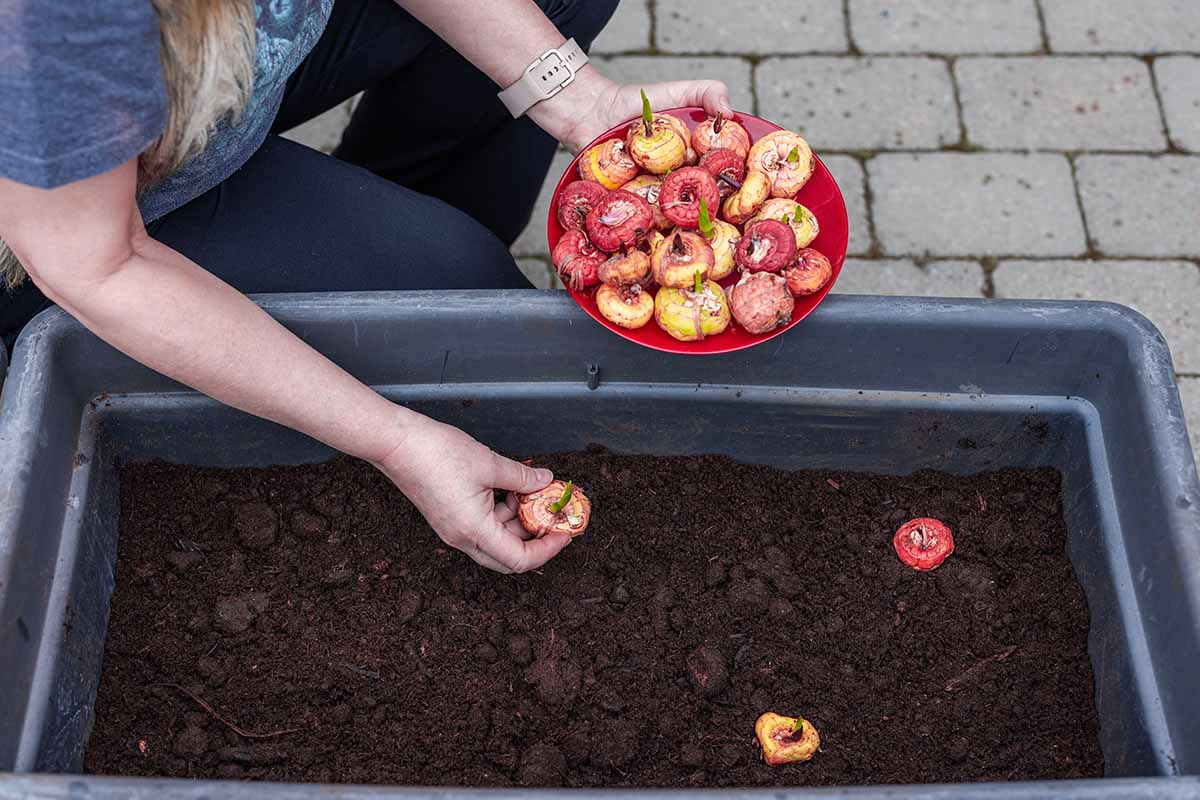
Plant the corms approximately two to four inches deep, depending on the size, as you’ll want them twice as deep as the length of the corm. Make sure the pointy end is facing upwards.
Water the medium well so that it’s moist but not soaking wet or soggy.
Care
Place the container in a warm, sunny spot indoors that receives at least six hours of direct sun and keep the soil moist.
You can also use supplemental lighting if you don’t have an area with enough exposure.
Allow the top inch of the soil to dry out between watering.
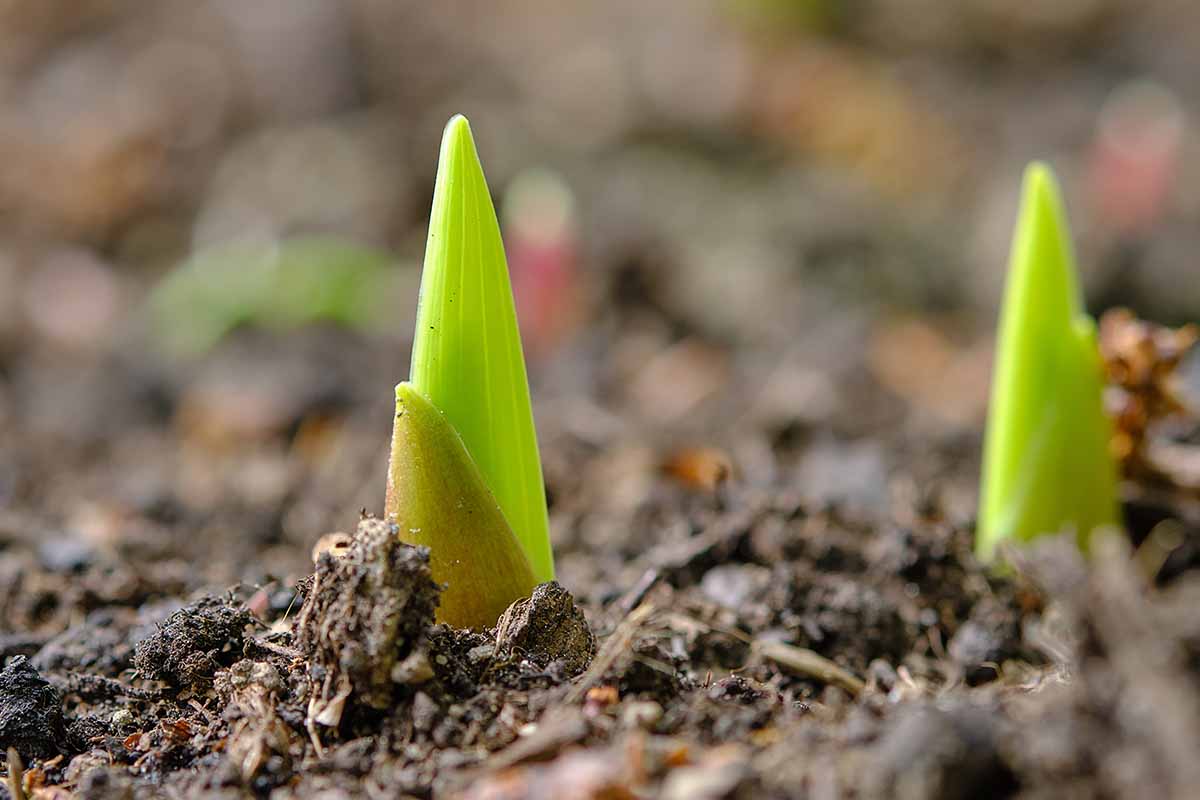
Be cautious if you’re using a large storage container, because it’s easy to add too much water to the point where the soil starts becoming soggy at the bottom of the container, which can lead to rot.
Within a few weeks to a month, you should see new growth popping out of the soil.
Moving Outdoors
Once the nighttime temperatures are at least 60°F and the gladiolus plants have at least three leaves, you can bring them outdoors.
Before you can put them in the soil and soak up the beauty, you need to harden the plants off as they’re used to the easy life of an indoor environment.
To harden them off, take the growing container outside and set it in or near the spot where the gladiolus will eventually be planted. Leave the pot there for an hour and then bring it back inside.
The next day, leave it out there for two hours before bringing it in.
You’re going to need a helper with a strong back if you used a large storage container! You can probably skip ab day after the workout you’re going to have.
Keep adding an hour each day until the plants can stay outside for a full eight hours.
At this point you can transplant your gladiolus.
Prepare the planting area by digging enough holes for all your corms. It’s better to dig a larger hole than you think you’ll need so you don’t have to try and wedge the corm into it.
Gently push your hands into the soil and dig down underneath the roots of each plant. You can also use a trowel, but I like to use my hands because I can really feel the root system and it helps to avoid damaging the roots.

Lift the gladiolus out of the soil and place it in the ground. The corm should be sitting at the same depth as it was in the growing container. Repeat until all your corms are in the ground.
Firm the soil up around the corms and water in well. You might need to add a little more soil if it settles.
Visit our comprehensive guide to growing gladiolus for tips on how to grow and care for this ornamental beauty.
Start the Party Early
If you can’t wait for spring to get started, starting gladiolus indoors will give you the leg up you’re craving. You can use this method for other non-hardy bulb species like cannas and dahlias.

What are your big garden plans this year? Will you be blending your gladiolus with other flowers? Are you growing a cut flower garden? Share in the comments section below!
For more tips on growing flower bulbs, you might enjoy reading these guides next:
